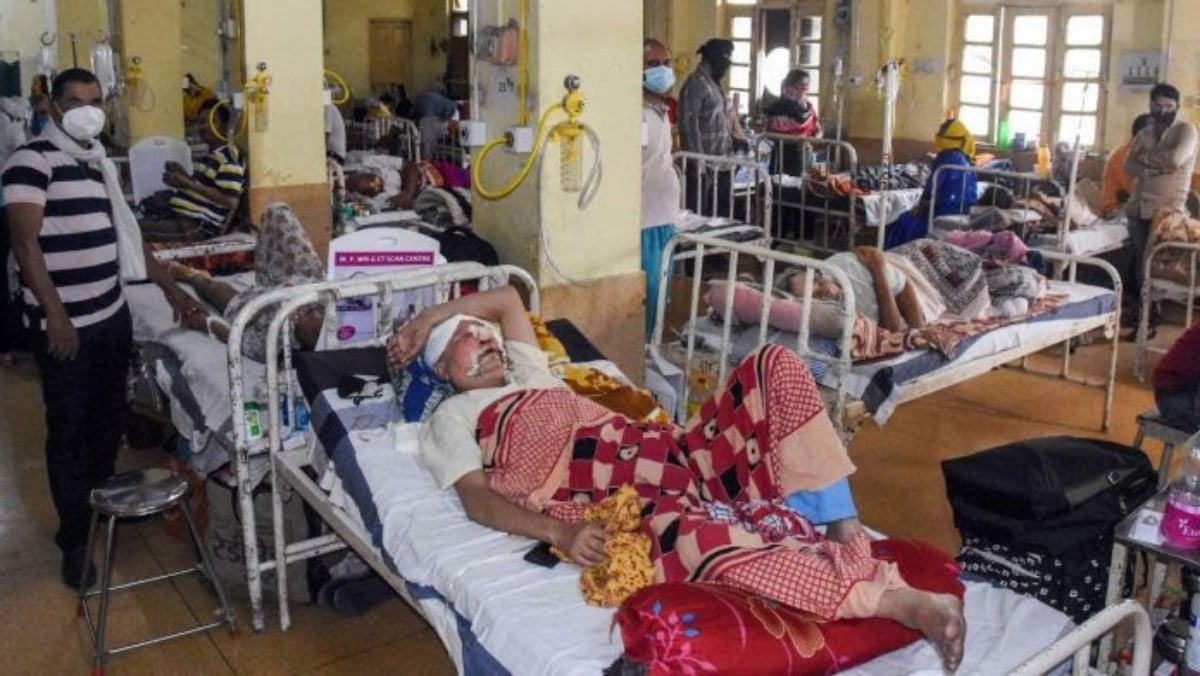Lifestyle
How Deadly is Black Fungus? All You need to Know about Black Fungus

Black Fungus also known as Mucormycosis, is a serious fungal infection, usually in people with reduced ability to fight infections.
US center for disease Control (CDC) referred to Mucormycosis as a serious but rare fungal infection.
It is caused by a group of molds called mucormycetes. These molds live throughout the environment.
Previously called zygomycosis, Mucormycosis mainly affects people who have health problems or take medicines that lower the body’s immune system.
See also Coronavirus;India records World’s highest Covid-19 Related Deaths After Court Judgement
Health Authorities have confirmed that the infection is being detected among people who are recovering or have recovered from Coronavirus.
People undergoing oxygen therapy in ICU, where a humidifier is used are more at risk due to exposure to moisture.
It most commonly affects the sinuses or the lungs after inhaling fungal spores from the air. It can also occur on the skin after a cut, burn, or other type of skin injury.
Table of Contents
Types of Black Fungus
Black Fungus is generally classified into five main types according to the part of the body affected.They are;
1.Rhinocerebral mucormycosis; is an infection in the sinuses that can spread to the brain. This form of mucormycosis is most common in people with uncontrolled diabetes and in people who have had a kidney transplant.

2. Pulmonary mucormycosis is the most common type of mucormycosis in people with cancer and in people who have had an organ transplant or a stem cell transplant.

3. Gastrointestinal mucormycosis is more common among young children than adults, especially premature and low birth weight infants less than 1 month of age. Such children may have had antibiotics, surgery, or medications that lower the body’s ability to fight germs and sickness.
See also Top Ten Public Companies Where Techies Want to Work.
Primary gastrointestinal mucormycosis is very uncommon. Reported cases in adults are on the rise in conditions such as malignant haematological disease, transplant recipients, malnourishment, diabetes, neutropenia and iron-overload states.
4. Cutaneous (skin) mucormycosis: This is the most common form of mucormycosis among people who do not have weakened immune systems. It occurs after the fungi enter the body through a break in the skin (for example, after surgery, a burn, or other type of skin trauma).

5. Disseminated mucormycosis occurs when the infection spreads through the bloodstream to affect another part of the body. The infection most commonly affects the brain, but also can affect other organs such as the spleen, heart, and skin.
However, a sixth type of Mucormycosis (black Fungus) has been described as mucormycosis of the kidney, or miscellaneous.
Signs and Symptoms of Black Fungus
The symptoms of black fungus usually varies depending on where the fungus is growing in your body. They may include the following:
*Fever
*Headache
*Sinus congestion
*Black lesions on the top of the nose or the inside of the mouth
*Shortness of breath
*Swelling on one side of your face
*Gastrointestinal bleeding
*Blood in your stool
*Diarrhea
*Belly pain
*Nausea and vomiting
*Cough
*Chest pain.
If the fungal infection begins in the nose and extends to brain, symptoms and signs may include one-sided eye pain or headache.
It may also be accompanied by pain in the face, numbness, fever, loss of smell, a blocked nose or runny nose.
All You need to Know about Black Fungus
If one’s skin is infected, the affected area may appear blistered, red, or swollen. It may turn black, feel warm, or be painful.
Through the blood, the infection can also spread to other parts of the body. This is referred to as disseminated black fungus.
When this occurs, the fungus can attack organs such as your spleen and heart. In severe cases, one may experience mental changes or fall into a coma. It can even be fatal.
How to prevent Black Fungus
According to Dr Anita Mathew, (Infectious Disease Specialist, Fortis Hospital) the most effective way to prevent the black fungus is to wear a mask while going out.
Gardens, dusty areas, where there is garbage bumping or food rotting are regarded as high risk areas.

Other preventive measures include;
*Avoiding direct contact with water-damaged buildings,
*Protecting skin, feet, and hands where there is exposure to soil or manure such as gardening or certain outdoor work.
*In high risk groups such as organ transplant, antifungal drugs may be given as a preventative.
*Diabetic and other immune-compromised people, it is important to control sugar levels and blood glucose.
*Steroids must only be taken after consulting with your doctor do not self medicate.
Treatment of Black Fungus.
According to Dr Mathew, the treatment of black fungus will depend on the patient’s case. She alongside other doctors discourages self medication of any kind.
However, the treatment of black fungus involves a combination of antifungal drugs. Also, surgically removing infecting tissue and correcting underlying medical problems (such as diabetic ketoacidosis) maybe used.

The duration of this treatment is three weeks, followed by oral medicines for another three to six weeks.”









